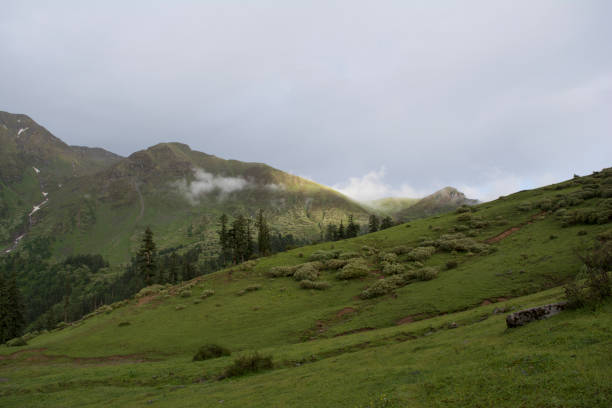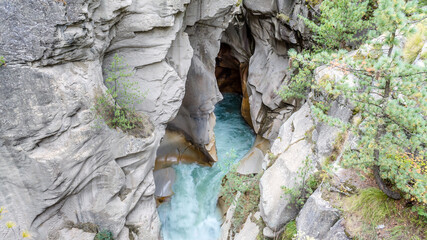Gangotri National Park In Uttarakhand
Discovering the Magnificence of Gangotri National Park in Uttarakhand , Gangotri National Park stands as a testament to nature’s grandeur and biodiversity.

Introduction to Gangotri National Park in Uttarakhand
Located in the picturesque state of Uttarakhand, India, Gangotri National Park is a pristine wilderness area nestled in the Himalayas. Established in 1989, the park covers an area of approximately 2,390 square kilometers and is named after the holy river Ganges, known as “Ganga” in India. The park is renowned for its breathtaking landscapes, rich biodiversity, and cultural significance, making it a must-visit destination for nature enthusiasts and spiritual seekers alike.
Table of Contents
Biodiversity and Wildlife
Gangotri National Park is home to a diverse range of flora and fauna. The park’s high-altitude ecosystem supports several endangered species, including the elusive snow leopard, Himalayan blue sheep (bharal), musk deer, and Himalayan tahr. Birdwatchers can also spot numerous avian species such as Himalayan monal, snow partridge, and golden eagle. The park’s rich biodiversity and unique habitats make it a haven for wildlife conservation in the region.
Trekking and Adventure Activities
Adventure enthusiasts flock to Gangotri National Park for its challenging trekking routes and stunning mountain vistas. Popular treks include the Gangotri Glacier Trek, Tapovan Trek, and Nandanvan Trek, offering breathtaking views of snow-capped peaks, alpine meadows, and glacial lakes. These treks provide an immersive experience in nature and a chance to witness the park’s diverse wildlife in their natural habitat.
Flora and Fauna: A Closer Look at the Ecosystem
The ecosystem of Gangotri National Park is characterized by diverse vegetation zones ranging from sub-alpine forests to alpine meadows. The park is adorned with a variety of flora including rhododendrons, junipers, birches, and alpine flowers like blue poppies and primulas. This rich vegetation sustains the park’s wildlife and contributes to its ecological significance in the Himalayan region.
Conservation Efforts and Challenges
Conservation efforts in Gangotri National Park focus on protecting its fragile ecosystem, preserving endangered species, and promoting sustainable tourism practices. Challenges such as habitat loss, human-wildlife conflict, and climate change pose significant threats to the park’s biodiversity. Initiatives like community-based conservation projects and awareness campaigns play a crucial role in safeguarding the park for future generations.
Spiritual and Cultural Significance
Gangotri holds immense spiritual significance for Hindus, as it is believed to be the source of the sacred river Ganges. Pilgrims visit Gangotri Temple, located near the park’s entrance, to pay homage to the goddess Ganga. The park’s serene landscapes and spiritual aura attract not only pilgrims but also travelers seeking solace and introspection amidst nature’s grandeur.
Best Time to Visit Gangotri National Park in uttarakhand

Gangotri holds immense spiritual sig
The best time to visit Gangotri National Park is during the summer months from May to June and the post-monsoon season from September to October. During these periods, the weather is pleasant, and the park’s trails are accessible for trekking and wildlife sightings. Winter months, especially from November to April, experience heavy snowfall and are not recommended for tourism due to harsh weather conditions.
nificance for Hindus, as it is believed to be the source of the sacred river Ganges. Pilgrims visit Gangotri Temple, located near the park’s entrance, to pay homage to the goddess Ganga. The park’s serene landscapes and spiritual aura attract not only pilgrims but also travelers seeking solace and introspection amidst nature’s grandeur.
Accommodation and Facilities in
Accommodation options near Gangotri National Park range from guesthouses and lodges to campsites, offering varying levels of comfort and amenities. Gangotri town and nearby villages provide basic facilities such as food, lodging, and trekking equipment. It’s advisable to plan and book accommodations in advance, especially during peak tourist seasons, to ensure a hassle-free stay.
Tips for Responsible Tourism

Visitors to Gangotri National Park are encouraged to practice responsible tourism to minimize their environmental impact and support conservation efforts. Some tips include respecting wildlife and their habitats, following designated trails, avoiding littering, and conserving water and energy resources. Engaging with local communities in a respectful manner also contributes to sustainable tourism practices.
Conclusion: Preserving the Beauty of Gangotri National Park
Gangotri National Park in uttarakhand stands as a testament to nature’s magnificence and cultural heritage. By promoting conservation, responsible tourism, and awareness about its ecological importance, we can ensure that this pristine wilderness remains a treasure for generations to come. Whether you seek adventure, spiritual solace, or simply wish to immerse yourself in nature’s splendor, Gangotri National Park offers an unforgettable experience that celebrates the harmony between humans and the natural world.
Frequently Asked Questions (FAQ) about Gangotri National Park
Gangotri National Park is located in the state of Uttarakhand, India, in the Uttarkashi District .
Gangotri National Park is renowned for being the origin of the sacred Ganges River (Ganga), making it a significant pilgrimage site for Hindus. It is also valued for its rich biodiversity, including rare flora and fauna species.
Popular activities in Gangotri National Park include trekking, wildlife spotting, birdwatching, exploring glaciers and high-altitude lakes, and visiting religious sites like the Gangotri Temple.
The best time to visit Gangotri National Park is during the summer months from May to June and the post-monsoon season from September to October. These periods offer pleasant weather and ideal conditions for outdoor activities.
- Wildlife enthusiasts can spot various species in Gangotri National Park, including snow leopards, Himalayan blue sheep (bharal), musk deer, Himalayan tahr, as well as a variety of bird species such as Himalayan monal, snow partridge, and golden eagle.
Yes, there are accommodations available near Gangotri National Park in uttarakhand including hotels, guesthouses, lodges, and tented campsites. Visitors are advised to book in advance, especially during peak tourist seasons.
Gangotri National Park experiences heavy snowfall during winter months, particularly from November to April. While winter visits can be challenging due to weather conditions and limited accessibility to certain areas, it can offer a unique experience for winter enthusiasts.
Yes, Gangotri National Park is part of several popular trekking routes in the Himalayas, including the Gangotri Glacier Trek, Tapovan Trek, and Nandanvan Trek, offering stunning views of glaciers, mountains, and alpine meadows.
